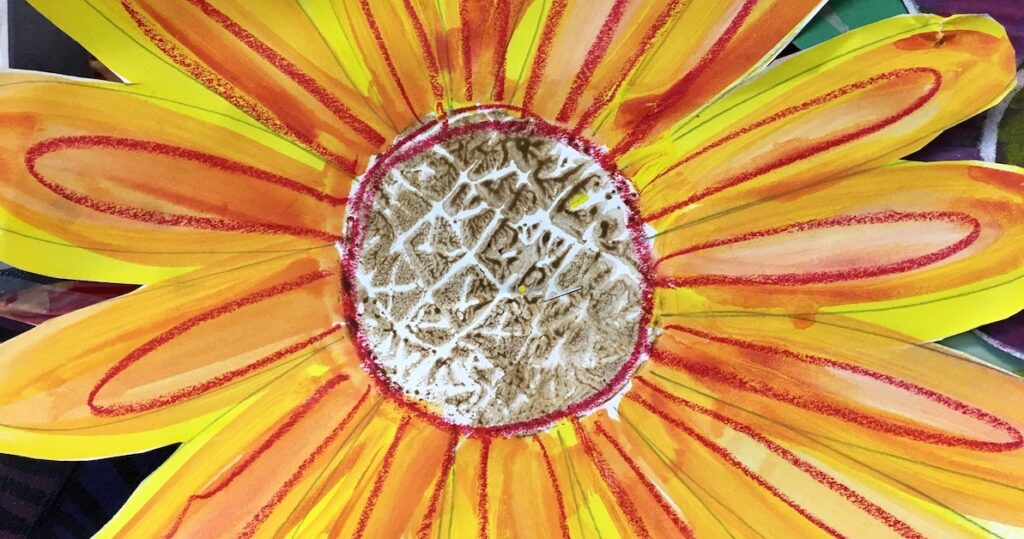Combing through Pinterest is like that game you played as a kid when you picked petals off a flower to reveal your crush’s true feelings about you.
Oooh, I found a new artist to show my students. (Pinterest loves me!). Ugh, I do not need any natural deodorant ideas, thank you very much. (Pinterest loves me not.) Nice! Another great classroom management idea from AOE. (Pinterest loves me!)

It’s a love-hate relationship many of us put up with because, overall, the good outweighs the bad.
Having a single spot to organize everything we find on the internet sure beats the dog-eared books, stuffed file folders, and messy magazine cutouts of the past.
However, among art teachers, Pinterest has the reputation of being a wolf in sheep’s clothing; luring users in with cookie-cutter projects that ultimately kill creativity.
We theory-informed teachers have seen way, way too many pins of crayons melting on canvas, hand tracing and coloring, and scribble art (insert eye roll emoji).

It’s understandable why there is a storm cloud of negative emotions and comments with respect to projects and ideas found on Pinterest. As a result, feelings of guilt trickle in and ripple through the art teaching community for using popular pins as catalysts for a project or a unit.
But it’s time for the shaming to stop.
Pinterest is a tool, just like technology. In general, both can be used and abused, but if it makes life and teaching just a bit easier or streamlined, quit the hating! We need to collectively trust that art educators know the difference between an educationally solid image of inspiration and all the other stuff you can find. It’s not only a place to start when looking for a project idea, but also a place to think through best practices related to materials, management, instruction, and assessment.
Curious about better cleanup techniques? Pinterest search. Have a surplus of brown watercolor? Browse through some other art teachers’ boards. Want a quick visual on how to manipulate cardboard? Pin it, baby! Looking for ways to display artwork from the ceiling? You guessed it – Pinterest.
From there, it is the job of the art educator to search through all the pins and decide what is (and what is not) relevant to their classroom environment and worth using with their students.
Most art educators are visually inspired if not vehemently visually passionate. Pinterest plays to our strengths, not our weaknesses. No games involved. Let’s agree to stop plucking each others’ Pinterest-loving petals and embrace Pinterest for what it is: a place to share ideas and remember them.
How do you feel about Pinterest?
Do you use Pinterest to find ideas and inspiration?
Magazine articles and podcasts are opinions of professional education contributors and do not necessarily represent the position of the Art of Education University (AOEU) or its academic offerings. Contributors use terms in the way they are most often talked about in the scope of their educational experiences.





